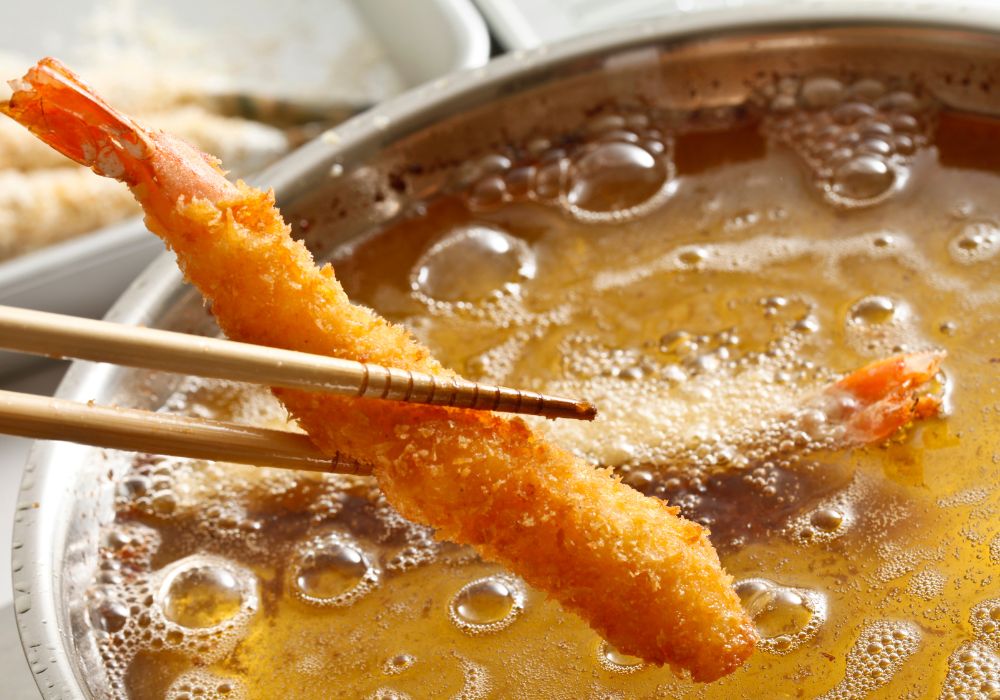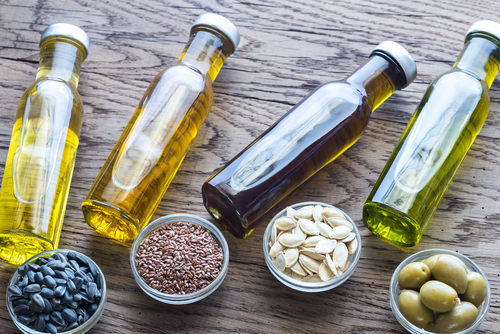All things are good for us in moderation, and deep-fried foods are no exception! Whether it’s fish and chips on a Friday night, delectably crunchy churros in cinnamon sugar for dessert, or chicken wings to snack on while watching the football, there’s no question that deep-fried foods are versatile and delicious. Here’s a useful guide for home cooks on different cooking times and temperatures for popular deep-fried foods, as well as useful tips to help you get it right every time.
How hot is deep-frying oil?
Deep-frying is when you cook food submerged in an oil or fat between 160 and 180 degrees Celsius. The best temperature for deep-frying depends on the portion size and type of food you want to cook, as some items can be flash-fried while others need a longer cooking time to cook through. For example, the deep-frying time for fish or chicken will be longer than the deep-frying time for French fries. That’s where our useful guide below can help you out!
Deep-frying temperature and cooking time guide for different foods

Of course, French fries are one of the most popular types of deep-fried foods, but they need a slightly different cooking method to create that crunchy, golden-brown perfection.
How to deep-fry French fries
To cook French fries, it’s best to heat your oil or fat to 160°С, then add in your potato chips. They should cook for 3-4 minutes at this temperature, and then you can increase it to 180°С for a further 3-4 minutes.
How do you know when the oil is hot enough?
If the oil is at a low temperature when you add your food, it will go soggy and unappetising. So how do you know when your oil is ready for frying? Most deep fryers come with a temperature setting that will let you know when your goal temperature has been reached. But there are other ways to do it. You can use a cooking thermometer that is rated for use in hot oil, or you can simply drop a small cube of bread into the oil. If it browns in 30-35 seconds, the oil is about 160 degrees Celsius. If it browns in 15 seconds, it’s close to 180 degrees Celsius, and 10 seconds shows it’s at around 190 degrees Celsius.
What is the best oil or fat for deep frying?
The best oils for deep-fat frying are palm oil (not palm kernel oil), peanut oil and canola (rapeseed) oil. These oils have a high smoke point, which means you can heat them up to the high temperatures you need for deep-frying without the oil burning. Using an oil with a low smoke point is dangerous and is one of the leading causes of kitchen fires. Not only can it catch alight (especially when your food is added to the oil), the heat will break down the fats in the oil and release acrolein and other harmful, carcinogenic compounds. Your food may end up tasting terrible too, as too-hot oil can create a bitter flavour.
We recommend palm oil as the best oil for deep-frying because it not only has a high smoke point, but also because it has a neutral flavour, so it doesn’t impact the flavour of your food. It’s also a healthy, vegan oil that’s trans-fat and cholesterol-free.
Can I reuse oil?
High-quality deep-frying oil can be reused, but there are a few good rules you should follow. First, let the oil cool to room temperature. Then, strain/filter it to remove any food crumbs (as these will burn and affect the oil flavour when you reheat it). You can use a clean coffee filter, a muslin cloth, or a fine-mesh sieve to do this. Finally, store the filtered oil in an airtight container in a cool, dry place. Stop reusing the oil if it shows signs of deterioration, like visible foam on the surface, smoking when reaching your target heat, darkening or dirty oil, and a distinctive smell.
When it’s time to dispose of the oil, don’t pour it down the drain as this causes blockages. Instead, let it cool and then place it in a sealed container into your general waste bin, or preferably dispose via a used oil collection company.
Can I mix cooking oils?
You can mix cooking oils for frying – but remember that this can impact the smoke point of the mixture as well as the flavour and aroma of your food. We recommend that you find an oil you like and stick to that for the most consistent results.
Can I deep-fry different foods in the same oil?
Yes, you can – but there are a few things to keep in mind. For example, if you cook fish in the oil and follow with chips or vegetables, they will likely have a fishy taste. Also, if you cook chicken strips in the oil and then vegetables, the vegetables won’t be suitable for people who are vegetarian or vegan. Similarly, if you cook a food that someone has an allergy to in the oil and then fry food for them, that food can cause an allergic reaction. In general, we recommend that you keep the oil you use for fish separately from oil used for chips, vegetables, and onion rings, and that you have another separate vat for desserts like doughnuts or churros.
Should I salt food before deep-frying?
This should be avoided unless it is part of an established recipe you are following, for example, if the batter for your fish or onion rings has salt in it. This is because salt combines with the water in the food and the fat/oil you are frying in, which can impact the flavour of the food. It can also accelerate oil breakdown, making it less reusable. Ideally, salt food after frying to make your oil last.
Tips for safe deep-frying
Safety is very important when deep-frying because the high temperatures and volume of oil can cause fires and injury if you don’t follow the right procedure. Here are some tips:
- Ideally use a purpose built deep fat fryer with thermostat.
- Use a wide, heavy pan or pot and don’t fill it more than 2/3 with oil.
- Have a well-fitting lid so that if it does catch fire, you can place the lid over the pot/pan and smother the flames.
- Always check the temperature of your oil so that it doesn’t get too hot – a deep-frying thermometer is a great investment.
- Avoid putting wet food into hot oil as this will cause splattering and bubbling – always dry off your food (with kitchen towel) before putting it in the oil.
- Test your hot oil with one piece of food to see if it is cooking at the right temperature.
- Add your food items slowly, one at a time, to avoid spills or bubbling over.
- Don’t overcrowd your pan or pot – instead, fry in smaller batches to avoid oil splatters and uneven cooking.
- Turn handles away from the cooker to avoid bumping the pan off the hob.
- Never leave your pan or pot unattended, even while heating up.
- Keep children out of the kitchen and away from the hob.
- Invest in sturdy tongs, a wire basket, and slotted spoons with long handles so you don’t put your fingers at risk of splatters of hot oil.
- If the oil starts smoking, turn off the heat, place the lid on the pan, and leave to cool.
- In the event of a fire, place the pan lid on the pan and turn off the heat, then call emergency services – you can also use a baking tray, fire blanket, or fire extinguisher.
- Never spray smoking or burning oil with water, as this will cause the flames to spread.
How to clean your deep-frying equipment
Cleaning is the least enjoyable part of cooking, but clean equipment is essential to getting the best cooking results next time you’re deep frying! Start by making sure your oil is cooled, then strain it and store it in a sealed container for future use. Now, soak your pot or pan and utensils in hot, soapy water. Give it a good scrubbing to remove food debris and grease, remembering to clean the outside as well as the inside. If it’s very greasy, you may want to run it through the dishwasher or use a degreasing product. Rinse well and leave it to dry thoroughly before you cook again.
Where to buy the best oil for deep-frying in the UK
Frymax is proud to offer a 100% RSPO certified sustainable palm oil product, helping to give restaurants, chippies, and home cooks a nutritious and ethical product that doesn’t harm the environment or communities. As a result, our palm oil is one of the most sustainable products on the market, providing you with a vegan oil, GMO-free, and an ethical source of golden, deep-fried fried perfection! For more information don’t hesitate to get in contact with the helpful Frymax team.
Become a Frymax member today to gain access to exclusive content, expert frying advice and the chance to enter our fantastic competitions.






